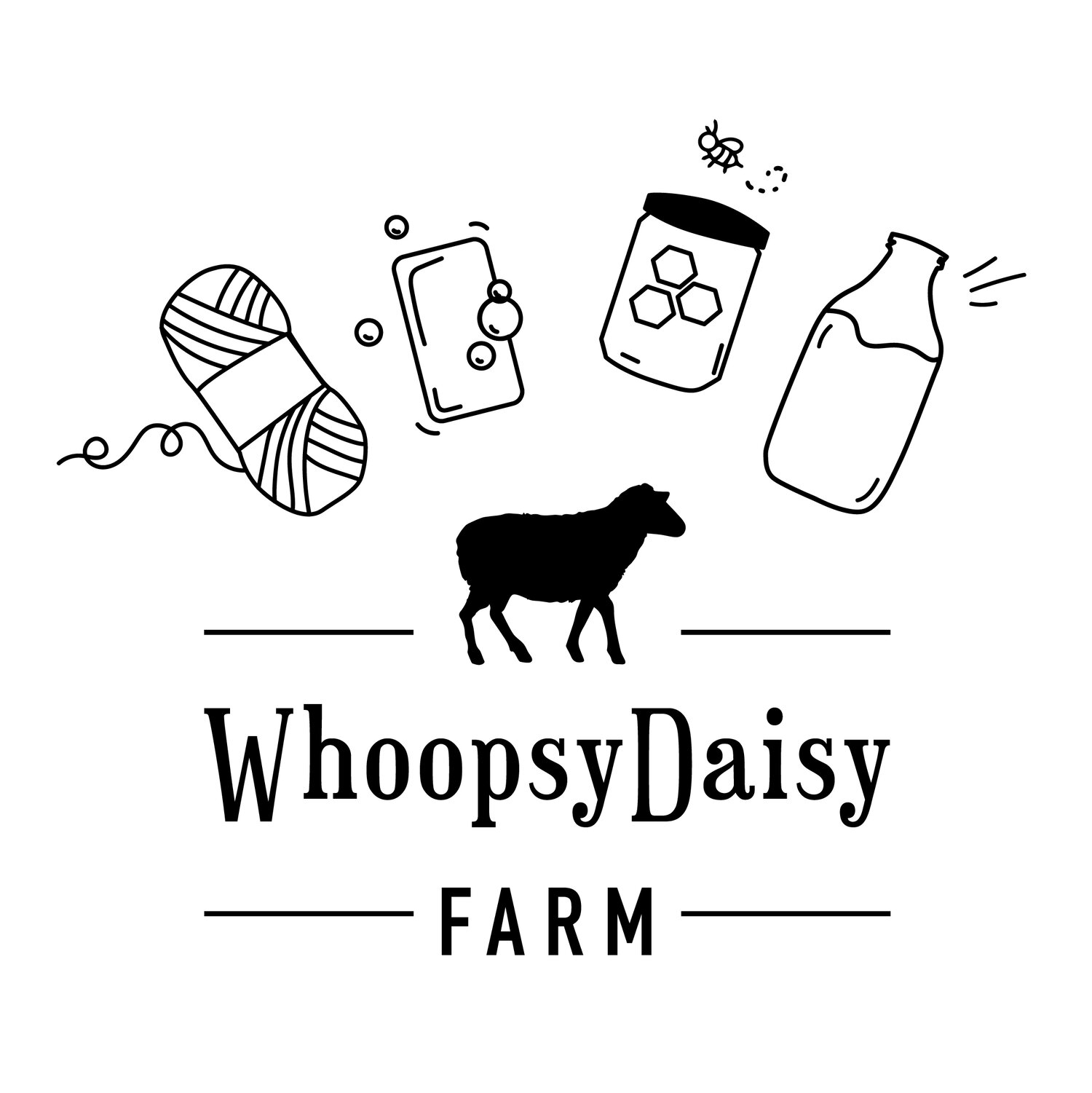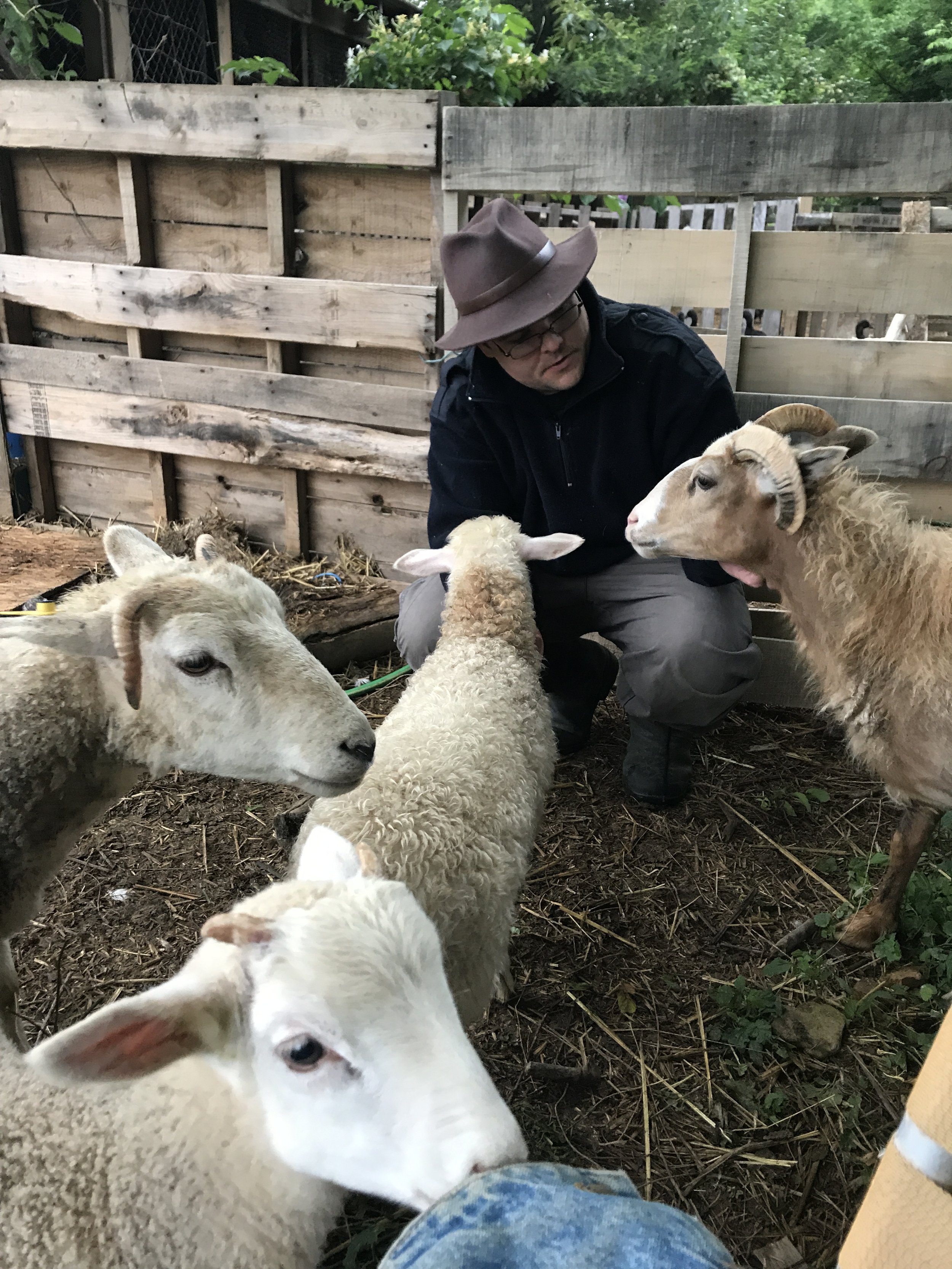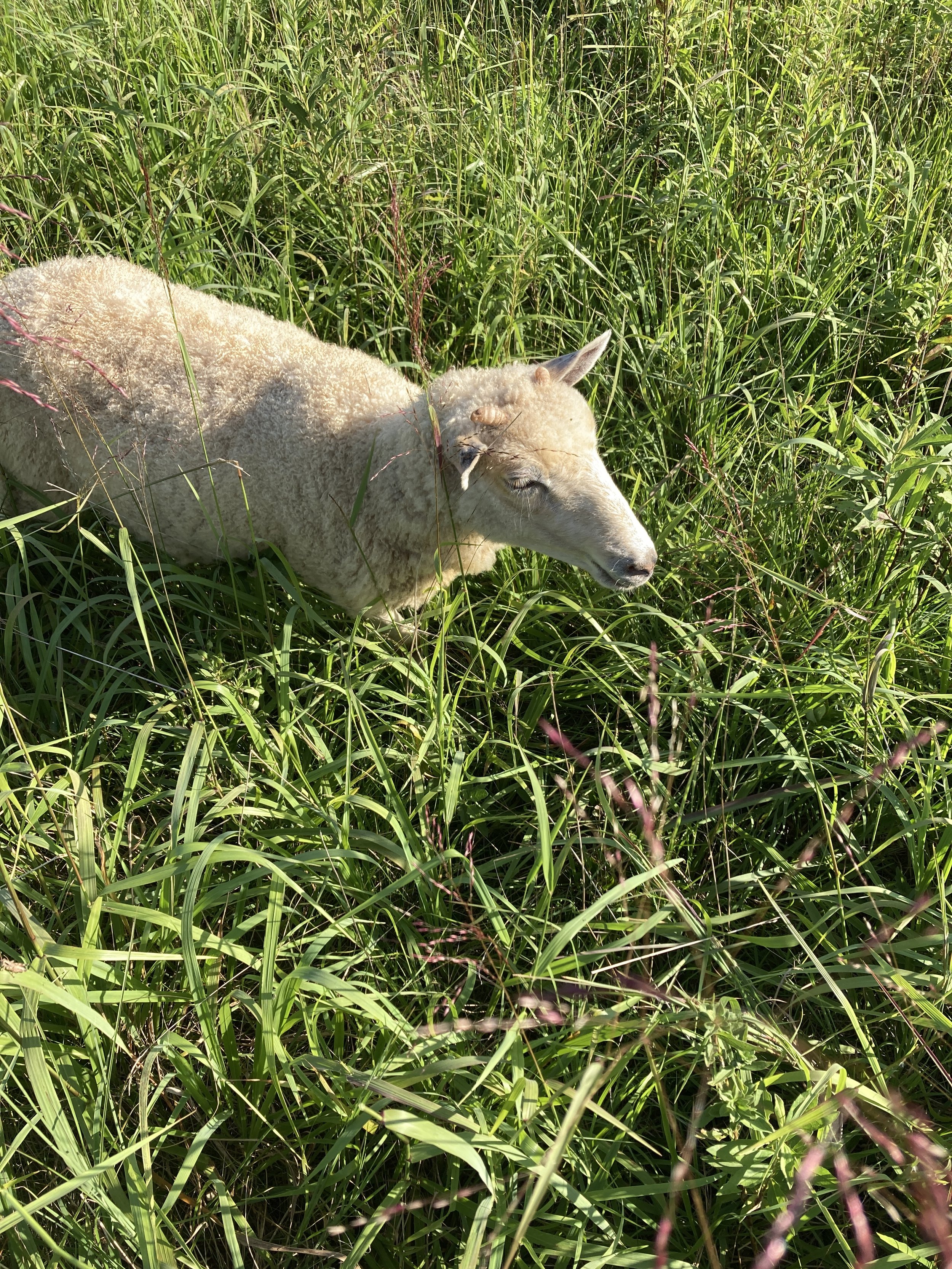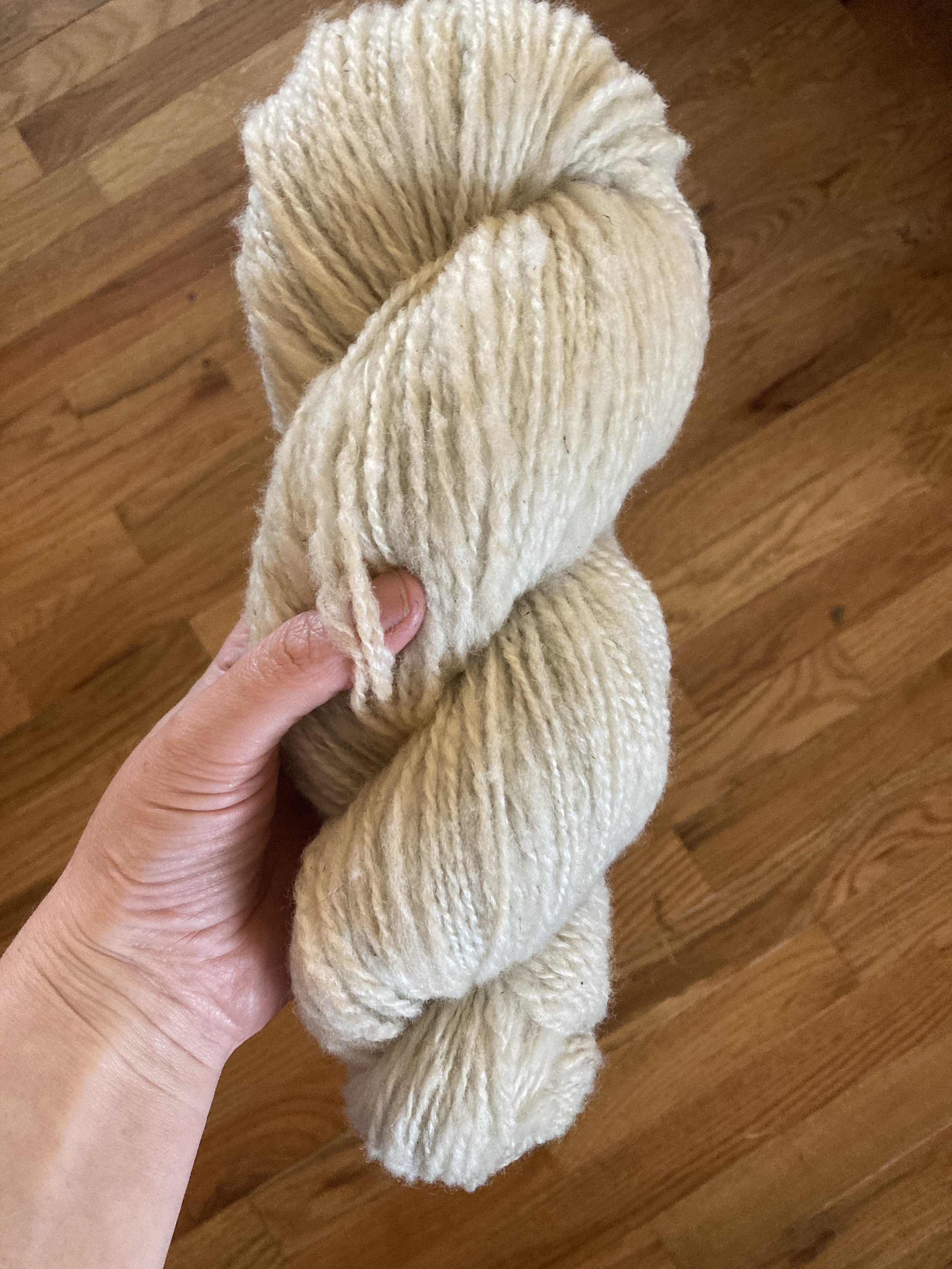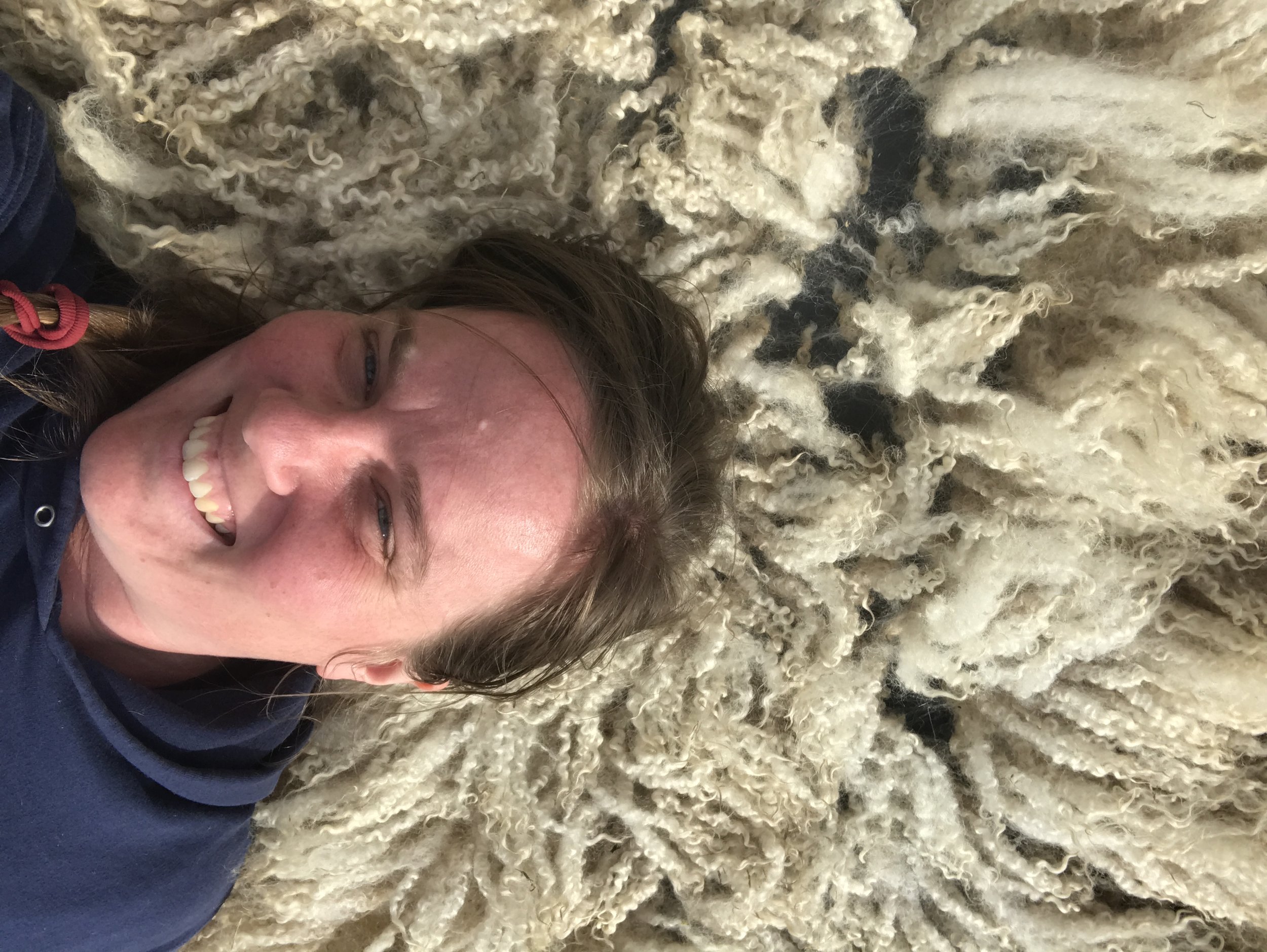What kind of sheep do we have?
What breeds of sheep do we own?
I actually get asked this a lot. In fact, our horned sheep with strong Awassi genetics get mistaken as goats whenever we shear them. The sheep don’t mind, but I do, especially when folks argue with me and tell me that sheep CAN’T have horns. This is simply not true… and rather ignorant because who hasn’t seen a photo of majestic long horned sheep on top of a mountain? (If you haven’t I invite you to check out my large soap bar because that’s what’s on the design of those soaps - some beautiful longhorn sheep!)
We have two categories of sheep - our purebred critically endangered Gulf Coast Native sheep, and our milk mutts. I do milk both, and there’s pros and cons to each. The Gulf Coast Native sheep are, as a rule, rather feral. They are also survivor sheep who we joke are our ‘apocalypse sheep’ because they require so very little input.
The Dairy Mutts are super friendly, give delightful amounts of milk, have amazing udders for hand milking, and are much easier to work with on a personal level. They also require a LOT of input in the form of supplements, minerals, vitamins, careful parasite management, food input during milking season, checking on their weight, etc. Their fleeces are also a little more high maintenance than the Gulf Coast Natives as far as shearing and processesing because of the Icelandic and Awassi genes many of my girls have.
My milk mutts have East Friesan, Awassi, Icelandic, Coopworth, Tunis, Zwartbles, and a squoodge of Katadin genetics in them. They are mutts!
But I like mutts, because while they are more fragile than the feral sheep, they are far less fragile than the purebreds! There is definitely something to be said for hybrid vigor.
Idealistically I would love to have some other purebred dairy sheep simply for variety’s sake. But I don’t see myself ever jumping at the chance to spend the money or travel the distance it would take to invest in some purebred dairy genetics. Those girls (or boys) are worth it but just not within our means.
The nice thing about breeding up programs is that one can glean the culls out of someone else’s breeding program and get a very nice dairy ewe for a much more affordable price. Yes you will have a guessing game each lambing as to which genetics will express themselves. But that provides opportunity to either start culling yourself and make money or meat for the freezer - both of which are valuable assets to any homestead.
At this point I’m not doing any kind of super specified breeding program - I’m mainly trying to keep hardiness, milkiness, and decent fleeces in my flock. At some point I’ll have to sit down and decide what kind of traits and genetics I want to focus on in my flock. But right now I’m just still giddy and thankful to have sheep and more wool than I know what to do with.
Mithril - the second Gulf Coast Native Sheep born on our farm - is incredibly friendly and defies all stereotypes of how feral the breed is
The Gulf Coast sheep make incredibly creamy milk and at some point I am going to send samples from all the different milkers to a lab to determine which genetics produce what as far as volume of milk and butterfat content.
My Tunis-influenced sheep seem to have more hardiness than the girls with a lot of Icelandic in them, and I’m curious why that is. Icelandics have been described as very hardy to me, but some friends here in Kentucky are actually getting out of Icelandics and switching to Gulf Coasts because they have struggled so much with parasites. I am curious if we’ve diluted our genetics so much in the United States with intervention, or if its our soil and depleted pastures that doesn’t give the Icelandic genes what they need to really thrive. That being said, the Icelandic sheep was created in ICELAND, which is a far different climate than Kentucky.
Handspun yarn from a ewe that has a large percentage of Tunis genes. Its soft enough kids like to hold it and play with it
I also breed for wool quality, but my standards of wool quality aren’t the same as conventional fiber flocks are. They are breeding for softness and desirability amongst hand spinners. I want durability of fleece so I can make practical clothes for myself and my family - and sell it to other people who have similar desires for their wool. Super softness is not always a good thing as it wears out easily, felts super easily, and is all around more high maintenance. A stronger fiber may be ‘scratchy’ if it isn’t processed correctly - as in scoured and depleted of all its natural oils and combed and brushed within an inch of torture. The more primitive fleeces of my flock seem to respond better to minimum processing. I wash those fleeces in cold rainwater and organic dish detergent, wash it once, and then lock spin it. That yarn won’t win any prizes at a fiber competition but it knits into beautiful gloves and hats and cardigans that wear well through our rough treatment in the cooler months. I’ve begun wearing wool once it drops below 50 degrees and have noticed that my body seems to regulate its temperature far more easily than when I wear conventional clothing and jackets made from synthetic fibers.
**** I keep saying I’ll wait to talk about wool until I make a blog post specifically about wool… but I love it so much I just can’t help myself and sneak little wool tidbits here and there throughout my posts. *****
I took a break from skirting this fleece from my Border Leicester ewe to just lay in the fluffy wooly goodness and bask in the sun. Call me weird, but I love the different smells of the fleeces from different sheep. I think the unique smells come from the different lanolin content of each breed
When recommending dairy sheep to other shepherds or potential shepherds, its really important for me to know what their goals are with dairy sheep. Do they simply want milk for themselves and their homestead? Are they wanting to start a commercial creamery? Do they want to have marketable breeding stock to sell as a farm product? Or are they planning on eating all the lambs as a source of meat for their homestead? How much capitol do they have to invest in upfront breeding stock costs, and how much can they afford per year in sheep health and maintenance? Do they want a wool they can market as another farm income, or is that something they are planning on composting or *cringe* throwing away?
There really isn’t a quick formula for all homesteaders to follow in any area of farming, and sheep are no exception. I don’t recommend people look at what we did in sheep breed acquisition as a model of what one should idealistically do oneself, because we broke all the rules in acquiring our flock. Conventional wisdom says to pick ONE breed, find ONE breeder, and keep one’s biohazard/biosecurity as the most upfront priority when bringing new animals on the farm.
We didn’t even quarantine most new additions on the farm because we simply didn’t have the infrastructure - or what infrastructure we had the sheep broke in order to get with the main flock. Now at the time I felt it was ok to get away with that because I was working with my sheep on a daily basis, inspecting them and touching them and training them - and we had under a dozen sheep at that time. So it was incredibly easy for me to spot a problem quickly and administer the proper remedy. For someone not as hands on, or not as observant of their flock, I probably wouldn’t reccomend such cavalier attitude. But sometimes you have to take risks or you won’t get sheep, and that’s the other side of the coin - we just didn’t have a farm who had enough lambs for sale for me to get a proper starter flock of any breed. Most of the dairy shepherds I know personally run incredibly small flocks of under 10 sheep on only a few acres. My flock has grown to about 20 sheep and we are considered a large flock for a non-commercial dairy operation. Sheep are definitely a homesteader’s animal, in that they work great in small spaces for folks not wanting a large financial input right away. But that also presents the challenge of acquiring one’s own flock in an affordable and timely manner. If you want alll your sheep from one spot, you probably are going to have to wait for a few years or pay a lot of money or both.
Our ewes standing at the gate waiting to be let in for treats while I milk another flock member
With our wide breed variety, each lambing is like shepherding Christmas - we have no idea what we are going to get. We don’t know what colors, fleece types, body shapes, or temperaments we are going to get. The Gulf Coast rams we’ve used to cover our dairy mutts make beautiful crossbreds with more hardiness than staying with just dairy crosses, but that also lends another variable of how much milk will that offspring give.
Luna, our half Gulf Coast Native, half Milk Mutt (Icelandic heavy genes) that will be milked for the first time this spring
I am going to milk my first Gulf Coast/Milk Mutt cross this year as Luna has been covered by an Awassi/East Friesan ram we borrowed from some friends. Her mother is a great milker with an udder that likes to dabble in Mastitis, but her aunt is one of our best milkers. I’ve noticed with other shepherd’s flocks that some traits do not get passed directly down from mother to daughter, but like to hop around in family units. This will drive the new dairy shepherd nuts when trying to decide how to buy their first sheep, but is a fascinating thing to notice once you already have them and are tracking traits and deciding how to selective breed for desirable traits.
In case you haven’t noticed, I tend to look at ‘undesirable lack of predictability’ as challenges to figure out instead of problems. This is both an endearing trait and a maddening trait, it just depends who you ask.
So that is a summary of our humble flock of sheep. I honestly expected it to be very challenging to sell the offspring of my sheep to new dairy shepherds, because I didn’t have one particular breed or trait over another. But actually I have found a lot of interest in my stock because of the variety, and the key is honesty. Homesteaders respond VERY well to upfront honesty. If I don’t know something, I tell them. If a lamb is coming from a ewe with a particular trait or problem, I tell them. Knowing what one is getting into seems to be more desirable than painting a glowing picture that is devoid of parasites, maladies, udder issues, and promises velveteen fleece that self shears off the animal.
If you have any more questions about our sheep or are interested in buying some lambs for your own farm, please reach out and email us at whoopsydaisyfarm@gmail.com and let us know which traits and genetics you are interested in. We will do our best to work with you and your preferences!
